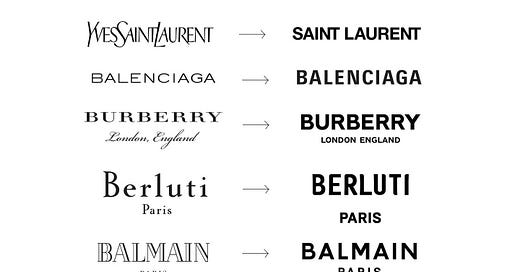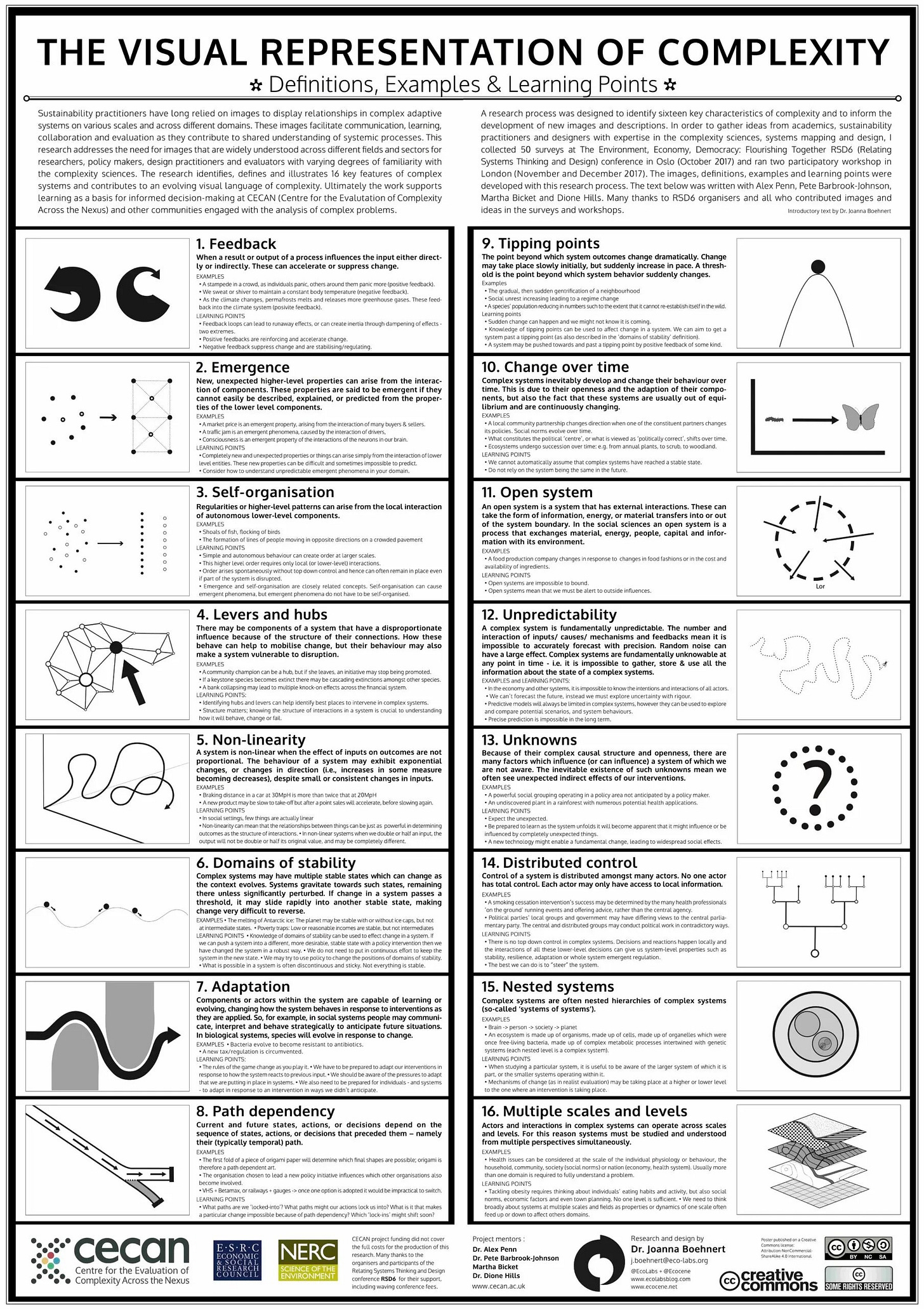Fish Food: Episode 620
Do social media algorithms flatten culture? The future of performance marketing, humanity in the age of AI, skeuomorphic AI, and a visual representation of complexity.
This week’s provocation: do social media algorithms flatten culture?
It’s a good question. Years ago I wrote about different types of content curation, positing that there were three main types - algorithmic (we see stuff because of algorithms), professional (people who are paid to curate such as editors and commissioners) and social (we see stuff because friends/people we follow think it’s worth sharing). I added a layer of self-curation over this, reflecting the affect of the choices we make (such as who we connect to, or the news and other sources we turn to).
Since then, algorithms have largely swallowed social curation. The ‘For You’ feeds have either become the default entry point or are the entirety of our feeds. Substack may be an honourable exception (thank you for reading) but even here algorithms are playing a larger part in recommendation and Notes.
A platform like TikTok is a good example of the richness of data that can inform this algorithmic curation. Users spend an average of 58 minutes a day on the platform (there are differing stats on this but I’ve taken a middle ground), with the average session lasting approximately 9.4 minutes. Assuming an average video length of 35 to 55 seconds, users might watch about 10 to 16 videos per session, and the app is opened an average of 14 times daily. That means an estimated range of between 140 to 224 videos viewed daily. That’s an awful lot of data signals that can be used to inform algorithmic curation (and where TikTok has a huge advantage of course over other platforms).
So as algorithmic curation (and AI) plays an ever larger part in content discovery and consumption, the question of whether algorithms (and AI) do indeed flatten culture is all the more important. There was some noise around this idea earlier this year following the publication of Kyle Chayka’s book on the topic (Filterworld: How Algorithms Flattened Culture, and there’s also a podcast on it here) in which he makes the case for how algorithm-driven platforms like Instagram, TikTok, and Spotify have homogenised cultural experiences. He argues that these algorithms, designed to maximise engagement, often promote content that appeals to the broadest audience, leading to a uniformity in the art, music, and media we consume. This results in a culture characterised by its ambient flatness, where creators are incentivised to produce content that aligns with algorithmic preferences, potentially stifling innovation and diversity.
Cultural homogenisation is visible across a variety of fields. In architecture for example, with the emergence of globalised cityscapes that increasingly resemble one another. Algorithmic design software often contributes to this by optimising for efficiency and cost, promoting standardised aesthetics over unique, culturally relevant designs. In music the recommendation algorithms that Spotify and other streaming platforms use popularise certain genres which may provide background listening (‘lo-fi beats’ anyone?), and artificially incentivise artists to shorten song intros and lengths, and include so-called ‘pop-overtures’, or a hint of the chorus in the first 5 or 10 seconds to hook you into listening longer. In fashion, companies like Zara, H&M, and Shein often replicate popular styles that are algorithmically identified as trendy, based on user data from platforms like Instagram and Pinterest, resulting in a ‘global wardrobe’. In food, social algorithms can reinforce popular food aesthetics, sometimes at the expense of regional or traditional cuisine. In interior design, physical spaces such as coffee shops have all started to look the same. In film and TV, streaming services like Netflix create a feedback loop where popular shows become more visible and therefore more watched and therefore more visible.
Whilst growing homogenisation has long been happening, it seems that algorithmic social media feeds have served to accelerate the globalisation of aesthetics and culture. For all the talk of hyper-personalisation and individualised feeds this has surely been an unintended consequence of the growing role of algorithms in our lives.
And yet…it doesn’t always feel like this. Thinking about my own Spotify usage for example, I’d say that I now listen to a wider spectrum of artists and genres than I ever have before, driven not entirely but in no small part by the ‘Discover’ features. I’d also say that I follow a broad range of thinkers and doers on the various platforms from artists to celebrities to friends and people with interesting perspectives (not all of whom I entirely agree with) so I like to believe that I’m not always existing within a filter bubble.
So in many ways it feels though social media algorithms are a double-edged sword. This recent paper for example, explores the dual role of social media in cultural homogenisation and cultural diversity. On the one hand it facilitates the rapid dissemination of global cultural phenomena which can lead to the erosion of localised traditions, but on the other it can serve as ‘a potent tool for preserving and promoting cultural diversity, providing platforms for individuals and communities to document, share, and celebrate their unique cultural heritages’.
And I suspect that the real impact of social media algorithms on culture lies in this duality. In simultaneously promoting cultural homogeneity and diversity. If there’s one thing that’s certain, it’s that as AI and algorithms become ever more embedded in our lives we should pay close attention to the balance between these two extremes.
I’d love to know what you think - please do share any thoughts that you have in the comments to this newsletter.
If you do one thing this week…
The latest episode of Google Firestarters has just been published. This one features the brilliant Kris Tait, MD US at Croud, talking about the future of performance marketing (and whether we should call it performance marketing at all).
Kris has some really interesting views here on why the future of marketing has to be about incrementality, and demonstrating incremental results. Tough to get to of course but he talks about some fundamental approaches, measurement, process, and 'bringing a performance mindset into a creative discipline'.
A fascinating forwards look at an area of marketing which is undergoing huge change. Here on YouTube, Spotify, and Apple.
Links of the week
For a broader perspective on ‘Humanity in the Age of AI’ I listened this week to this excellent podcast interview with Yuval Noah Harari speaking about his new book. Highly recommended - he’s such a brilliant thinker
Meanwhile Sam Altman of OpenAI has predicted that Artificial General Intelligence (AGI) could be realized by 2025 (crikey), in contrast to many other commentators who believe the timeline is considerably longer
This week I took a look at the new Google Vids AI video creation tool in Workspace Labs. It enables you to create simple explainer videos by starting with a range of possible inputs (story prompts, a slide deck, a document) and it expands it into storyboards, templates, and a video which can be used for anything from customer support, to marketing and team working. It can use your voice or an AI generated one, you can add in your own footage if you want, and it seems very complimentary to the Notebook LM AI research assistant. Pretty amazing.
‘The pertinent question with AI is not “can we make it do what humans do”, but rather “what will it do that we never could”’. Thanks to Katie Dreke for pointing at this thought-provoking post on why we’re still in skeuomorphic phase of AI and how we need to build applications around the things AI is uniquely suited to doing. There’s some fascinating examples of this ‘medium-native AI’ including Tenor which helps you to generate potentially infinite personalised and realistic simulations to practice difficult or emotional conversations in real time
The APG have done an excellent piece of work (led by Firestarters speaker Tom Roach) to conduct some research and provide some proper thought leadership on what GenAI means for the future of planning and strategy. They are running a free webinar on 21st November 5pm-6pm BST to unveil the top-line of their thinking, covering areas such as AI tools for strategists, what it means for the role, effectiveness and critical thinking. I was interviewed for this work so I’m looking forward to seeing the outputs.
Sign of the times - The Guardian has stopped posting on X (I stopped a few months back and haven’t gone back)
Meanwhile ads are coming to Threads in early 2025. Here we go.
Belgian friends…I'll be speaking at the Belgium Association of Marketing Congress in Brussels on 6th December about marketing transformation - do come and say hi if you'll be there
The geek in me loved this visual representation of complexity featuring sixteen key characteristics of complex adaptive systems, based on the work of Joanna Boehnert.
Quote of the week
‘Everything is on fire, but everyone I love is doing beautiful things and trying to make life worth living, and I know I don’t have to believe in everything, but I believe in that’
Nikita Gill, HT @swissmiss
And finally…
Instagram follow of the week is ‘Flacking’ by the artist Ememem who uses brightly coloured mosaics to repair holes in the pavements and roads. He describes his work as ‘a poem that everyone can read’, but I just love the way that this turns neglected, imperfect spaces into beautiful focal points in the urban environment. Bravo.
Weeknotes
This week I was out in the Middle East working with my banking client and also deep into finishing off the first draft of the report on marketing operating models I’m doing. More on that later. Next week I’m in Dubai working with said banking client again.
Thanks for subscribing to and reading Only Dead Fish. It means a lot. If you liked this episode please do like, share and pass it on. If you’d like more from me my blog is over here and my personal site is here, and do get in touch if you’d like me to give a talk to your team or talk about working together.
My favourite quote captures what I try to do every day, and it’s from renowned Creative Director Paul Arden: ‘Do not covet your ideas. Give away all you know, and more will come back to you’.









Hi Neil re culture flattening we saw a similar thing proposed in a presentation by Pip Bingemann. I think that the causes are multi-factorial rather than algorithmic in nature for the examples you feature.
A good deal of design and typography goes through fashions. For instance ten years ago more of an illustrative approach was in vogue, before that in the 1980s Neville Brody inspired lots of homage design across graphic design and branding around the world.
The global aspect of city design comes from a number of factors:
- Increased knowledge what's happening elsewhere
- Increased knowledge of what works
- Standardised sizes of components and tools like CAD
- Global rather than localised supply chains
I did a more in-depth response to Pip's presentation here, which goes into these points and more in greater detail: https://www.linkedin.com/pulse/end-culture-gearóid-carroll-feqie/